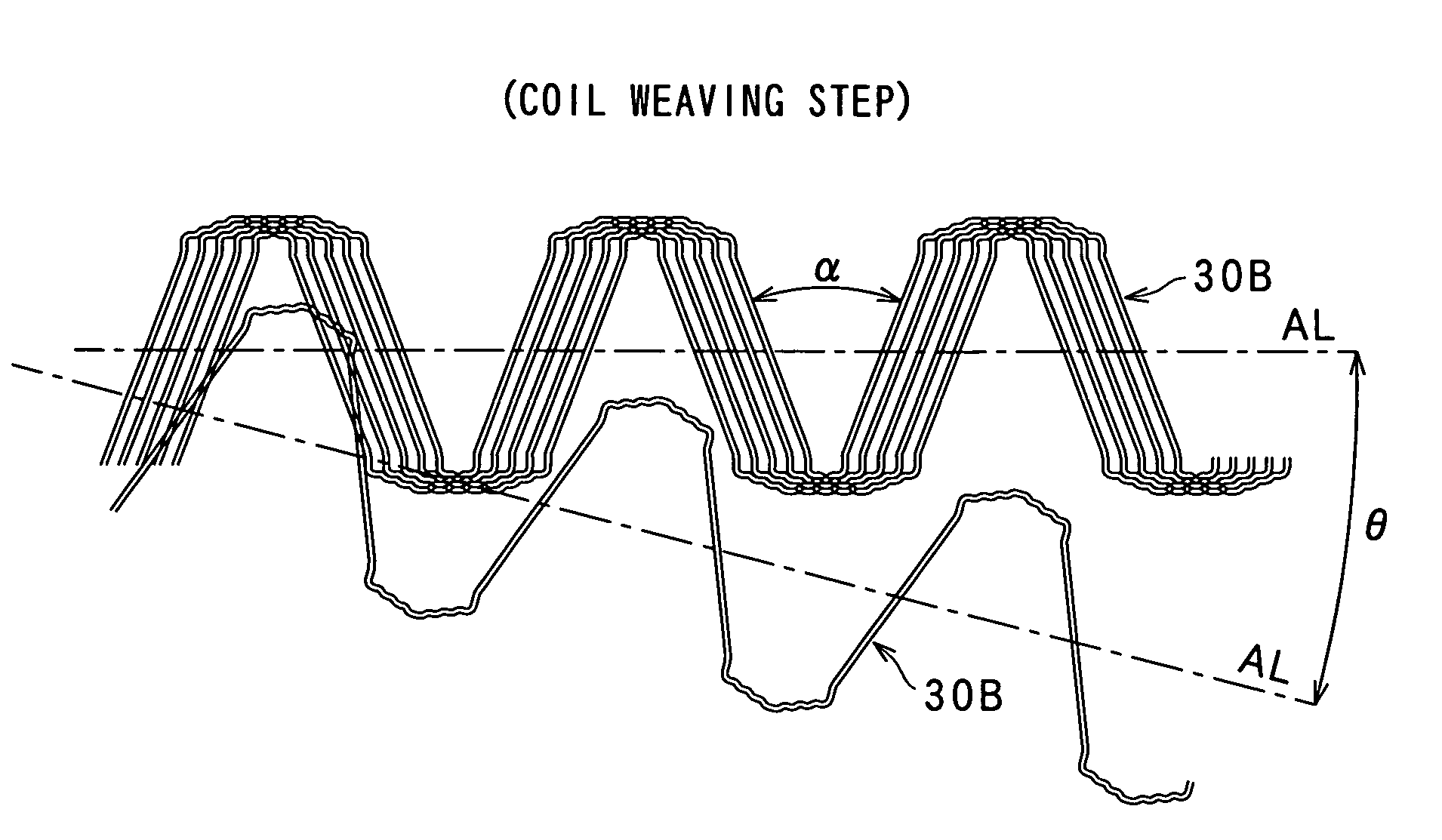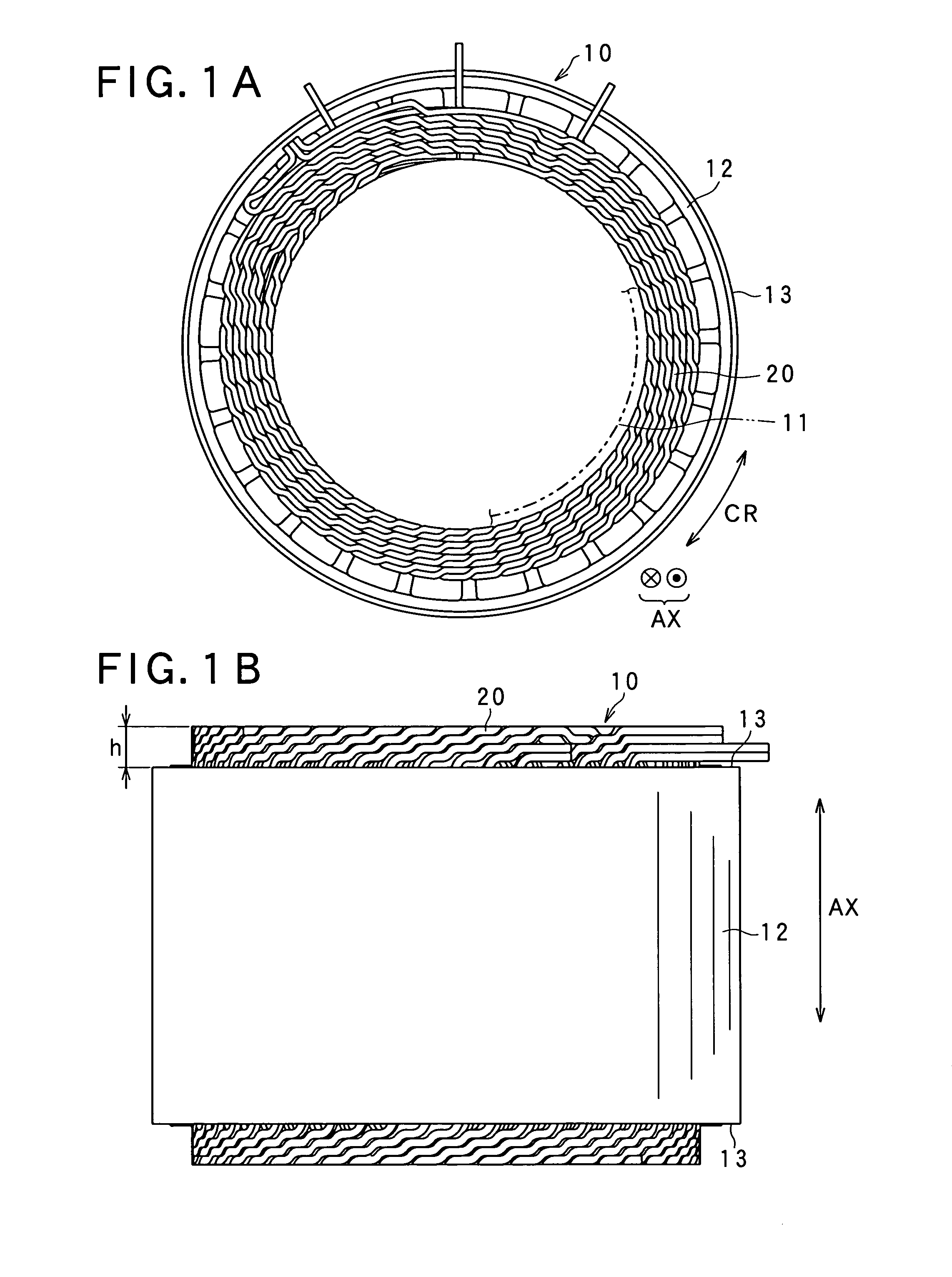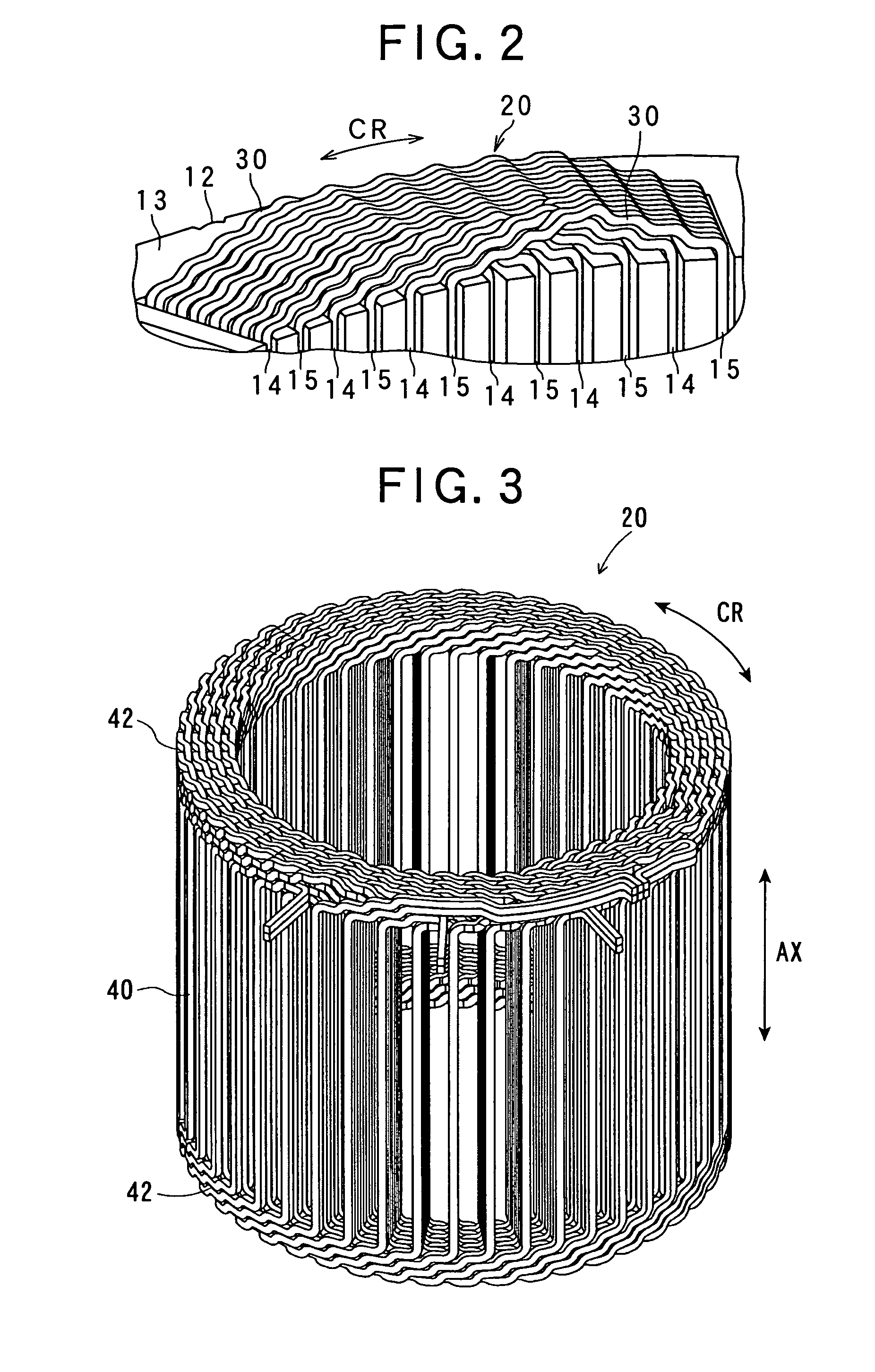Method of manufacturing coil assembly unit for rotary electric machine
a technology of rotary electric machines and coil assembly units, which is applied in the direction of web record carriers, instruments, magnetic bodies, etc., can solve the problems of difficult to provide coil assembly units with precision, large manufacturing devices, and high cost, so as to reduce the manufacturing of rotating devices and reduce the deformation of coil wires , the effect of speeding up the coil weaving step
- Summary
- Abstract
- Description
- Claims
- Application Information
AI Technical Summary
Benefits of technology
Problems solved by technology
Method used
Image
Examples
Embodiment Construction
[0035]With reference to the accompanying drawings, embodiments of the present invention will now be described, in which how to manufacture a coil assembly for a rotary electric machine, according to the present invention, will now be described.
[0036]FIGS. 1A and 1B outline a rotor 10 for the rotary electric machine which is for example an alternator, a motor, or a motor generator for a vehicle. FIG. 1A shows a perspective view of the rotor 10, while FIG. 1B shows a side view of the rotor 10. This rotor 10 is manufactured with a coil assembly 20, which can be assembled based on various manufacturing methods provided various embodiments of the present invention.
[0037]The stator 10 shown in FIGS. 1A and 1B is used by, for example, a rotary electric machine called a motor generator for a vehicle, which works as an electric motor as well as a generator. The stator 10 has a bore in which a stator 11 is accommodated. Though not detailed, the rotor 11 has a plurality of magnetic poles of wh...
PUM
| Property | Measurement | Unit |
|---|---|---|
| opening angle | aaaaa | aaaaa |
| opening angle | aaaaa | aaaaa |
| opening angle | aaaaa | aaaaa |
Abstract
Description
Claims
Application Information
 Login to View More
Login to View More - R&D
- Intellectual Property
- Life Sciences
- Materials
- Tech Scout
- Unparalleled Data Quality
- Higher Quality Content
- 60% Fewer Hallucinations
Browse by: Latest US Patents, China's latest patents, Technical Efficacy Thesaurus, Application Domain, Technology Topic, Popular Technical Reports.
© 2025 PatSnap. All rights reserved.Legal|Privacy policy|Modern Slavery Act Transparency Statement|Sitemap|About US| Contact US: help@patsnap.com



